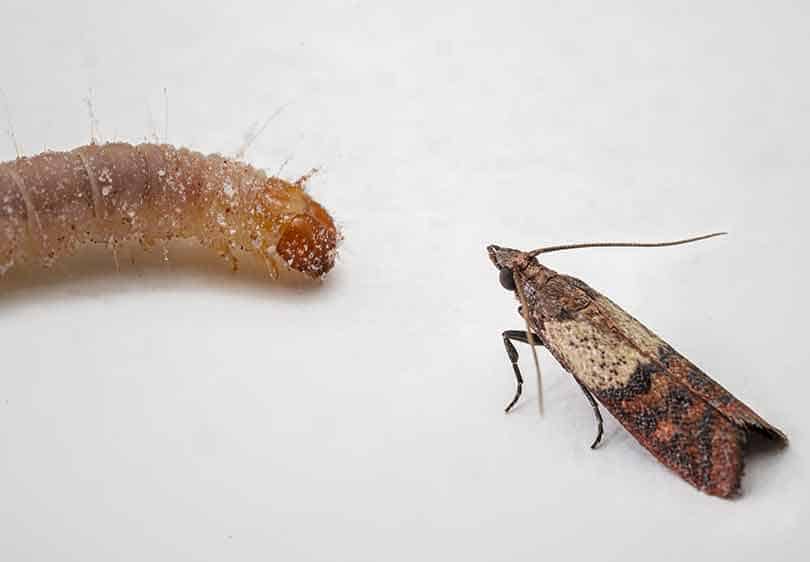The Best Guide To Guardian Pest Control
The Best Guide To Guardian Pest Control
Blog Article
What Does Guardian Pest Control Do?
Table of ContentsGuardian Pest Control Can Be Fun For EveryoneSome Known Details About Guardian Pest Control Things about Guardian Pest ControlThe Of Guardian Pest ControlRumored Buzz on Guardian Pest ControlGuardian Pest Control for Beginners
A targeted strategy like this keeps ecological effect low. Looking and monitoring for insects must be done routinely, anywhere from everyday to weekly depending on the kind of bug and the atmosphere. Develop a route, and keep in mind the locations on the route to quit and examine under fallen leaves, along a structure, at lure terminals.Looking around a customer's yard for areas mosquitoes might lay eggs. Seeing them every day and in increasing numbers means it's time to situate and remove their nest.
You might utilize a catch plant such as zinnia to attract Japanese beetles. Once they're concentrated in one location, you can eliminate them with a tiny quantity of insecticide. Remaining up-to-date on insect control approaches gives you an edge over your competitors. But a lot more notably, it gives you the confidence you're offering the ideal service choices to your clients.
Not known Incorrect Statements About Guardian Pest Control
Stopping bug invasions is less complicated than removing them, so tell consumers when securing a fracture or caulking a window would make a distinction. Recognize the bug and tailor the control method (orem pest control) - https://canvas.instructure.com/eportfolios/2836569/Home/Guardian_Pest_Control_Your_Ultimate_Solution_for_Orem_Pest_Control. Know precisely what type of bug you're managing, and research the atmosphere carefully as you come up with a treatment strategy
There are numerous basic techniques to insect parasite monitoring. When creating a general insect administration technique it is useful to think about all of the available alternatives. The majority of certain bug control methods can be classified into the adhering to major categories: social control, host resistance, physical control, mechanical control, organic control, and chemical control.
These techniques involve alteration of typical farming or horticulture practices to stay clear of bugs or to make the atmosphere less desirable for them. There are a number of types of social controls; the complying with are a few instances of frequently used approaches. A western corn rootworm, a bug that can be regulated by plant rotation.
The Ultimate Guide To Guardian Pest Control
replaces a plant that is vulnerable to a major pest with one more crop that is not at risk, on a rotating basis. Corn rootworm larvae can be deprived out by adhering to corn with one to two years of a non-host crop such as soybeans, alfalfa, oats, or various other crops.

For example, pickleworms will focus in squash grown near cucumbers, and the squash plants can be ruined. A thoroughly thought wikipedia reference about time of planting will certainly aid prevent some insect problems such as seed corn maggot. Some apple varieties are immune to one or even more insects. Photo by USDA-ARS Host resistance, or plant resistance, has actually been utilized efficiently for decades to decrease the influence of bugs.
Get This Report on Guardian Pest Control
Plant breeders try to use these attributes and also enhance them to create crops that are immune. Many ranges of vital plants grown today, such as wheat, rice, alfalfa, corn, and apples are resistant to several pests. Historically, the advancement of immune varieties was frequently tedious and extensive, needing several generations of plant hybridization.
Floating row covers maintain pests out These are approaches that physically keep insect bugs from reaching their hosts - https://medium.com/@thomassutton84059/about. Obstacles include home window screens for keeping wellness and nuisance parasites out of buildings and plant bugs out of greenhouses, drifting row covers for many gardening plants, and plant collars to keep cutworms from striking plants such as tomatoes
Codling moth larvae can be caught under cardboard bands covered around apple trees; the bands are removed and ruined. Some bugs, such as earwigs and slugs, can be lured to their death in sunken catches filled with beer. Sometimes, chemical appeals (including pheromones or various other chemical attractants) are readily available to increase catch performance.
Top Guidelines Of Guardian Pest Control

For instance, plum curculio beetles can be removed from fruit trees by faithfully banging tree limbs with a cushioned stick and collecting the grown-up weevils on a white sheet as they befall of the trees. A strong spray of water will certainly dislodge aphids and termites from greenhouse, yard, and house plants.
Fascination About Guardian Pest Control
Growing or husbandry reveals several soil insects to desiccation or predation by birds. This is using helpful organisms to regulate parasites. Many centuries ago, Chinese farmers observed that ants were helping to control insect pests in their citrus orchards by eating caterpillars, beetles, and leaf-feeding insects. The farmers uncovered that by collecting the papery nests of a specific type of ant from trees in the countryside and moving them into their orchards, they got better control of some pests.
Predators might be bugs or other insectivorous pets, each of which takes in numerous insect prey throughout its lifetime. Parasites lay their eggs in or on their host.

Report this page